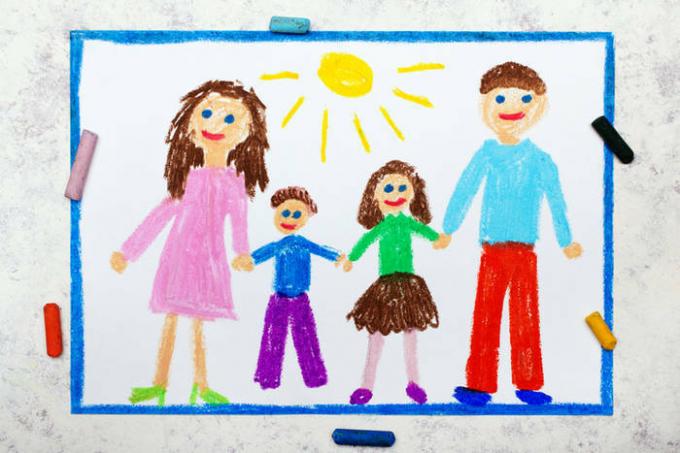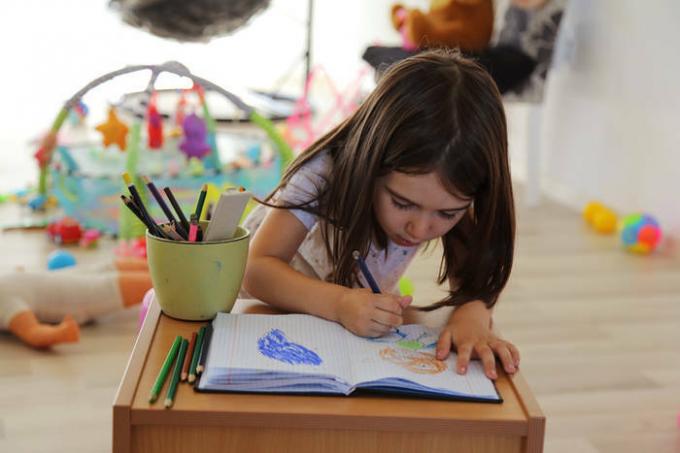From the outside, they may seem insignificant, but they are not.
As psychologists say, the child's drawing can be used to understand his emotional state, attitude towards loved ones, fears and experiences.
How the drawing is located on the sheet
If the child feels loved, surrounded by attention and care in the family, then he himself will be drawn in the center of the sheet, and all other family members around.
If the kid draws in a small part of the sheet, he may feel unnecessary, superfluous.
If the drawing is so large that it does not fit on one sheet, this indicates the child's impulsiveness.

How a child paints himself
If a child painted himself angular, in a closed, pinched position, with his hands hidden, this indicates isolation, problems in communicating with peers.
Cheerful children with normal self-esteem draw themselves smaller than adults, in open poses (legs, arms apart), rounded.
If a child painted himself larger than adults, this is a sign of overestimated self-esteem and permissiveness in the family.If the child depicts the characters' clothes in detail, it may be a sign that he is trying to attract additional attention to himself.
Alarming signs
It is worth paying attention if a child, for example, drawing a family, constantly forgets to draw someone close to him, whom he sees constantly or with whom he lives together. If he regularly draws the same plot.
If the kid usually decorates the drawings, but the family does not, this indicates an anxious state, a desire to "take revenge" in this way on an unloved family member.

Aggression in children's drawings
If the child draws in detail and often depicts weapons, fangs, claws, fists, fire, etc. + this may indicate both his hostile attitude towards the world and his desire to protect himself from offenders.
It is worth trying to carefully talk to the child in order to find out from whom he is so protected.What else should you pay attention to:
Pressure
If the child strongly presses on the pencil when drawing, this indicates the desire to overcome obstacles, assertiveness.
Weak pressure - self-doubt, low self-esteem, the need for support and approval.
Size of objects in the picture
Large objects indicate activity, some aggressiveness, striving for leadership. Small ones - about tightness, timidity, low self-esteem.
If a child draws people, he usually depicts those who are more dear to him as larger ones.
How many colors are used
If a child draws with only one color, this indicates his fear of expressing himself. From 2 to 5 colors - about self-confidence, flexible thinking.
More than 7 colors are a sign of emotional instability.
You will also be interested to read:
- Causes of excessive childish talkativeness
- Parent mistakes that hinder the development of children
- 7 signs of normal parents


